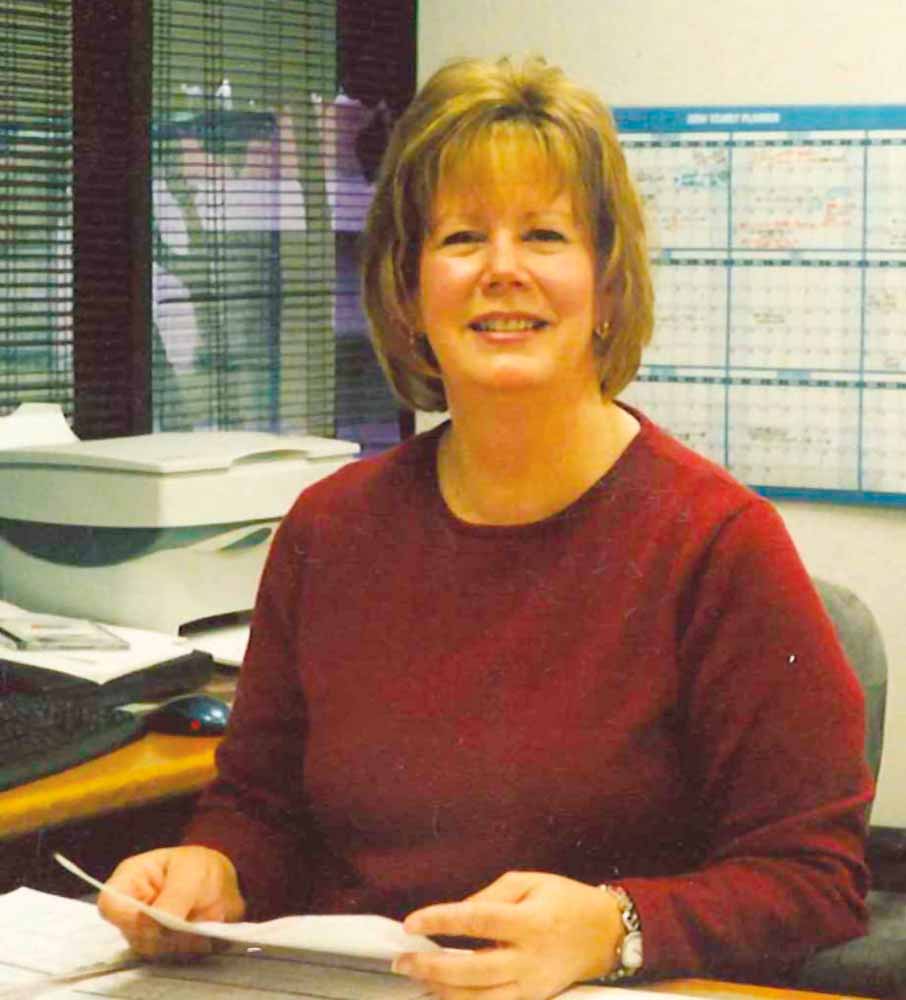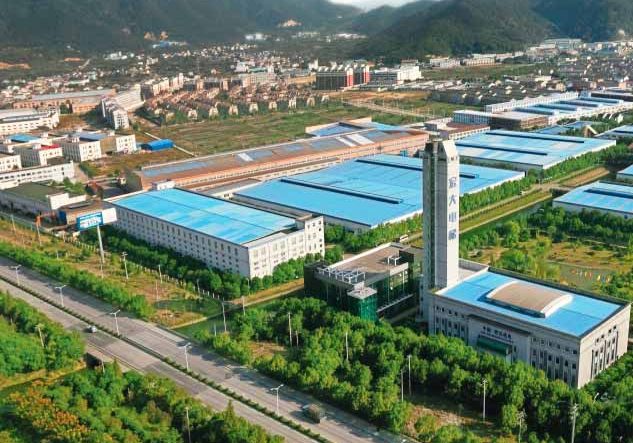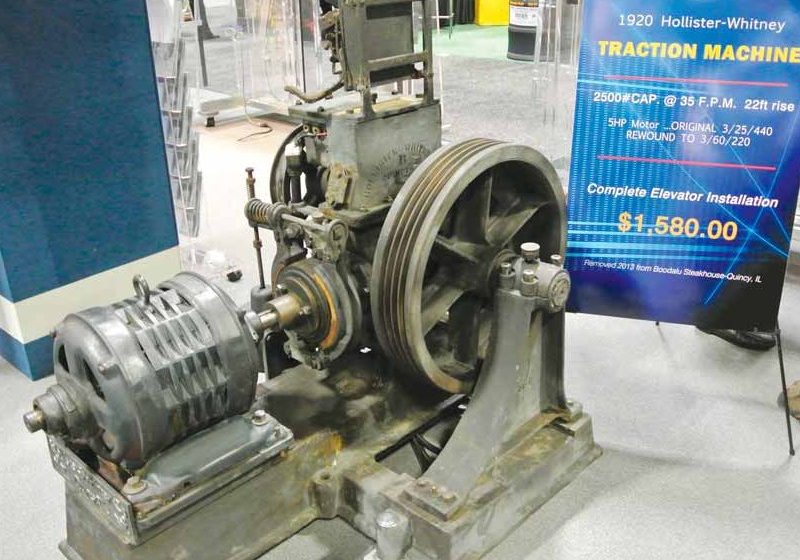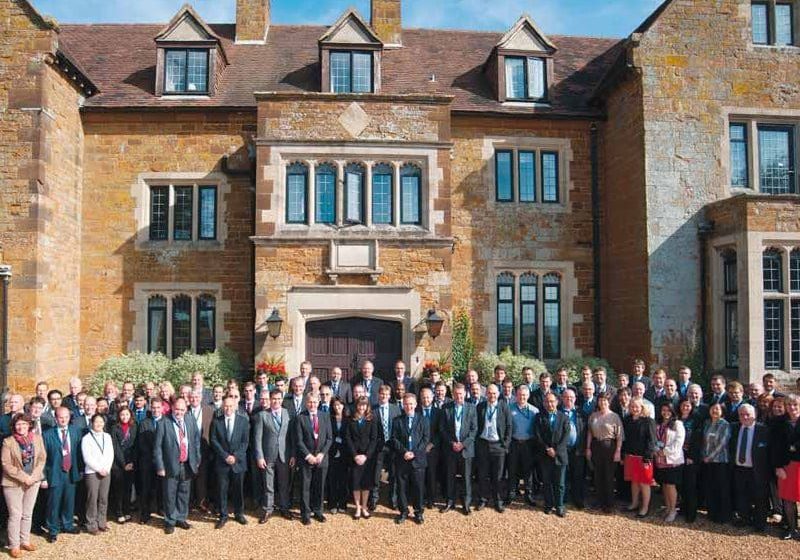Dotty Stanlaske
Dec 1, 2013

A Trailblazer for Women in the Industry
When Dotty Stanlaske began her career as a construction helper for Otis in 1980, women were rare in the industry. She was hesitant about even applying for the job, since it was during a frigid Boston winter, and she didn’t relish the thought of working out in the elements. But, at the encouragement of an uncle, she applied and immediately got the position. At the time, legislation had just passed promoting women and minorities in nontraditional jobs. As expected, weather conditions were challenging at the under-construction hospital to which she was dispatched. She remembers:
“There were no windows or doors, no interior walls, concrete-slab upper floors and a dirt floor on the ground level. The wind blew through the building unmercifully. All we had for heat were a few salamanders [space heaters] and a heater in the shack we used for lunch and breaks. My dad and brothers took bets as to how long I would last.”
But Stanlaske not only lasted, she excelled, eventually becoming the first female mechanic in the International Union of Elevator Constructors Local 4. She also became the first female licensed elevator constructor in Massachusetts.
“My dad and brothers took bets as to how long I would last.”
Despite the early challenges, construction work came naturally to her. “It was a terrific feeling to walk onto a jobsite that had nothing but an empty hoistway and leave it with a running car,” she said. An on-the-job injury resulted in a career shift from construction to inspection in 1993, a move that led to her first contact with NAESA International, when she was an elevator inspector for the Commonwealth of Massachusetts seeking her QEI certification. Choosing the same career path as her grandfather, father and five brothers was the right decision for Stanlaske, who said her 30-plus years in the industry have unquestionably molded her into the confident and independent woman she is today.
Family Ties, Family Inspiration
A native of Stoughton, Massachusetts, Stanlaske comes from a long line of elevator professionals. Her maternal grandfather, Aubrey Meek, was a Boston elevator mechanic. “People used to say he could walk into a machine room and pinpoint the problem just by listening to the sounds of the relays on the controller,” she said. Meek guided Stanlaske’s father, Leslie Langer, Sr., into the industry in the early 1960s, and all five of her brothers worked in the industry in various capacities. Several of Stanlaske’s nephews have pursued elevator careers, as well. She said her parents always encouraged their children to pursue their dreams.
During Stanlaske’s time as inspector for the state, her supervisor convinced her she should become QEI certified, so she signed up and completed training in Maryland. “Bernie O’Neil and Pat Kirby were my instructors,” she recalls, adding, “Never, in my wildest dreams, did I think I would someday be employed by the same organization that has provided my QEI training.”
Path to Top at NAESA Full of Twists and Turns
The path that led Stanlaske to the top at NAESA has been full of twists and turns. She advanced at her state inspector job, becoming supervisor over the Westborough and Taunton offices in Massachusetts. After a few years in that role, Otis asked her to become the company’s maintenance supervisor. After several years in that position, Stanlaske, who had an associate’s degree in business, wanted to complete her education. So, approaching her 50th birthday, she decided to take a job with a small,
family-owned company as a sales representative, which provided her the flexibility she needed to return to school. It was a watershed time. She said:
“I managed to get my BA in Business Management and graduated cum laude – one of my proudest accomplishments. I graduated on a Friday evening, had a graduation party on Saturday and left Massachusetts on Sunday to begin my employment as chief elevator inspector in Washington. That was my last position before I came to NAESA in October of 2004.”
While employed by the State of Washington, she was involved with implementing licensing for elevator mechanics, which she believes is vital. “It seemed ironic to me that individuals working in Washington as plumbers were required to be licensed, but individuals working on elevators were not,” she said. “After all, we don’t hear about people who have been killed or injured while using toilets or tubs that were not installed properly.”
Along the way, Stanlaske said she had many mentors. Besides her parents, these have included her brothers, who provided encouragement, as well as “insight into the male mind.” That insight, she said, “helped me on numerous occasions when I might have otherwise been tempted to throw in the towel.” Another mentor, Stanlaske said, was Arthur Prescott, one of her first mechanics, who was patient as Stanlaske strove to learn and grow. As for inspiration, Stanlaske said she draws it from Marie MacDonald, who she describes as the “first lady of the elevator industry.”
Stanlaske describes herself as a tenacious perfectionist in her career, a trait she believes contributed to NAESA’s achieving American National Standards Institute (ANSI) accreditation (ELEVATOR WORLD, November 2013). “I have a strong work ethic and, thankfully, so do Emerald [McGehee] and Felicity [Wilkinson], NAESA’s other two staff members,” she said. “We make a great team, and I recognize that our organization would not be as successful as it is without them or the numerous volunteers that assist us.” While people support NAESA, Stanlaske and her husband of 21 years, Bob, support the Elevator Escalator Safety Foundation (EESF) each year with their Wino in Tenino event that includes wood-fired pizza, barbecue and a silent auction.
“It was a terrific feeling to walk onto a jobsite that had nothing but an empty hoistway and leave it with a running car.”
Besides EW, the majority of Stanlaske’s industry-related reading consists of codebooks. She makes an effort to attend NAESA’s regional workshops, which give her the opportunity to meet and speak with NAESA members and certified inspectors, and hear about any concerns firsthand. She has also attended NAEC’s annual convention. Ironically, she said, the recession has had a positive effect on NAESA. She explains:
“Typically, individuals working in the elevator industry in construction or maintenance are paid more than elevator inspectors. It can be very difficult to recruit inspectors when construction is booming. However, once faced with retirement or layoff, individuals often find the inspection facet of the industry to be much more appealing, despite the reduction in wages.”
Stanlaske said being flexible, efficient, cost conscious and tech savvy are keys to surviving the economic downturn.
In her spare time, Stanlaske enjoys quilting, gardening and reading mystery novels by Janet Evanovich. She and Bob love to travel and recently enjoyed a chartered fishing trip that wound its way through the Alaskan islands. It was the true definition of a getaway, she said, with lots of wildlife sightings, the catching of her first halibut, and, best of all, no Internet or cell-phone service. On the opposite end of the spectrum, she would love to visit the Luxor Hotel in Las Vegas and speak with the mechanics about how they installed its inclined elevator. She is also fascinated by the mechanics of the elevator within the St. Louis Arch. Looking back on her career, Stanlaske said she has no regrets. “I don’t believe I would have done anything differently,” she said. “I am truly blessed to be a part of such a great transportation industry that touches so many lives on a daily basis.”
The Road to ANSI Accreditation
Dotty Stanlaske said her greatest challenge as NAESA International’s Executive Director was achieving American National Standards Institute (ANSI) accreditation for certification of elevator inspectors. A nonprofit organization, NAESA promotes current codes and standards, teaches and educates stakeholders, certifies elevator inspectors, and assists the populace in enhancing elevator safety and understanding new elevator technology. NAESA has been one of three organizations accredited by the American Society of Mechanical Engineers (ASME) to certify elevator inspectors to the QEI-1 standard. Of the three organizations, NAESA has the distinction of being accredited by ASME for almost 30 years. As of January 1, 2014, however, that will not be the case. NAESA received a notification letter in March 2011 that ASME would no longer accredit organizations to certify elevator inspectors. Stanlaske immediately got to work.
Stanlaske estimates approximately 2,400 inspectors worldwide are certified through NAESA. Language in ASME A17.1/CSAB44 and QEI-1, as well as some legislation, required inspectors be certified by an organization holding an accreditation from ASME. Stanlaske began working with NAESA’s Executive Committee, Board of Directors and Board of Certification immediately after receiving the aforementioned letter. “I immediately began researching various accrediting organizations, and began the long, involved process of seeking accreditation with ANSI,” she said. “Although we already had a Certification Program Manual in place with ASME, the manual had to be revised to adhere to ANSI’s requirements.” From the ASME standpoint, she participated in the QEI-1, Inspections and Standards committees to help write language that would ensure recognition of other entities for the accreditation of certifying organizations. ASME confirmed elevator-code standards have been revised to allow for accreditation from other organizations.
Throughout the process, Stanlaske kept authorities apprised of language updates through teleconferences “so that they could consider any necessary adjustments to their rules and regulations requiring certification of elevator inspectors.” Her work culminated in NAESA’s achieving ANSI accreditation on September 24, an accomplishment announced, fittingly, at the annual National Association of Elevator Contractors convention in Tampa (p.44).
Get more of Elevator World. Sign up for our free e-newsletter.








